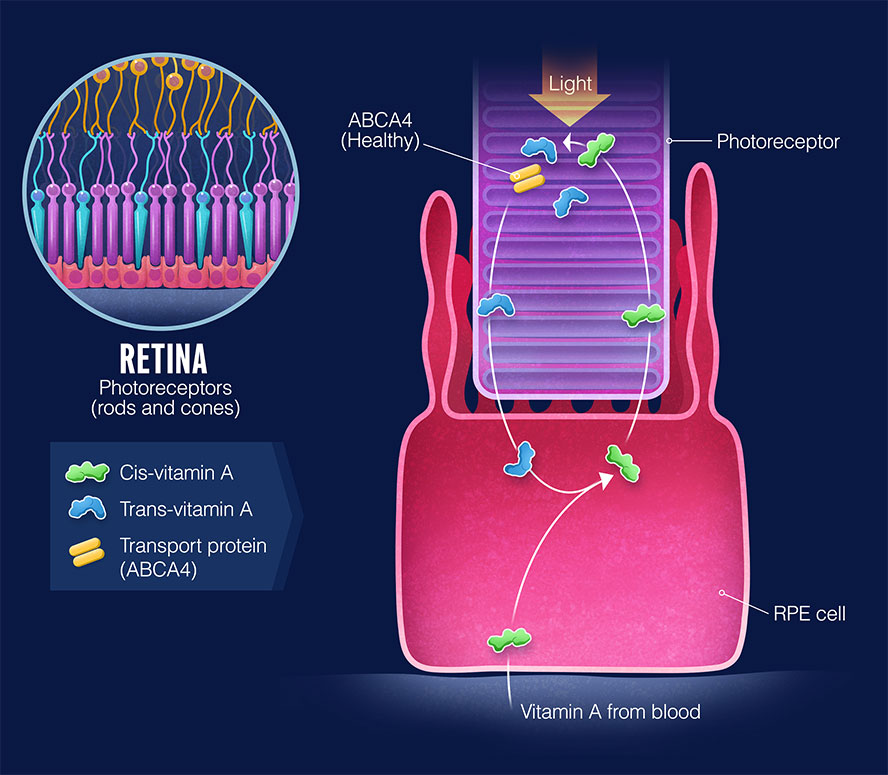
Our Science
Accumulation of toxic vitamin A dimers is a mechanism of disease for several degenerative retinal diseases.
Vitamin A dimerization
Sight is made possible by a biochemical chain reaction in the eye: Vitamin A enables photoreceptors in the eye to convert light into electrical signals that are sent to the brain. Vitamin A is essential to the eye’s ability to see but also has a propensity to form dimers – or clumps – that can accumulate and are toxic to the retinal pigment epithelium (RPE) layer.

Reducing Vitamin A dimerization has the potential to prevent the onset or delay progression of retinal diseases such as Stargardt and geographic atrophy.

Alkeus is seeking to transform the treatment of Stargardt disease.

Gildeuretinol is
the result of breakthrough science that addresses vitamin A dimerization, a singular underlying mechanism of Stargardt disease.


Gildeuretinol is designed to reduce the formation of toxic vitamin A dimers in the retina without modulating the visual cycle. Reducing dimerization of vitamin A can potentially prevent progression of Stargardt disease in early-stage patients and reduce further damage to the retina in more advanced-stage disease patients.
Explore our clinical trials
Our clinical studies are focused in Stargardt disease (TEASE studies) and geographic atrophy (SAGA study).
